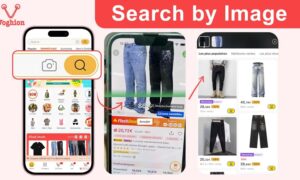According to the Center for Disease Control and Prevention (CDC), 61 million people in the United States live with a disability. That’s a quarter of the US population. Worldwide, 15% of people suffer from a disability, according to data compiled by the World Bank.
Businesses with an online presence can no longer ignore these numbers. By doing so, they’ll effectively give up on significant market share. Aside from lower profits, companies these days face the risk of being sued for having an inaccessible website or product design.
AI has revolutionized many areas of tech, and accessibility is no exception. Here are three ways in which AI makes websites more accessible.
1. Alternative Login Verification
One of the core tenets of the Americans with Disabilities Act is that unpredictability must be minimized. As it pertains to websites, all design elements must be easily navigable, and all of their functions must be work irrespective of the user’s ability.
Login verification is a good case in point. Often, users are confronted with the dreaded CAPTCHA code that even people without disabilities tend to get wrong. In addition to this code, most websites require users to enter a login and password combination.
Users with visual disabilities or hearing impairments will find it difficult to use such features and access information. In addition, some users might find it difficult to constantly type information every time they need to access their data. AI-powered facial recognition is helping websites provide seamless access to people with disabilities.
Via the inbuilt camera on the user’s device, AI algorithms can verify the person’s identity by comparing it to stored pictures of the user’s facial features. Thanks to advances in AI technology, algorithms can now identify facial features from many angles and lighting conditions.
Apple iOS’s ability to identify a user despite them wearing a mask is a great example of this feature in action.
2. Keyboard Navigation
People with disabilities tend to use virtual keyboards, or navigate websites using only arrow keys. The SC 2.1.1 states the requirement: “All functionality of the content is operable through a keyboard interface without requiring specific timings for individual keystrokes, except where the underlying function requires input that depends on the path of the user’s movement and not just the endpoints.“
In layman’s terms, in proper accessible design, all functionality must be usable with the keyboard.
AI solutions can account for these functionalities. An AI algorithm can create design element shortcuts automatically that don’t conflict with browser or OS shortcuts. As a result, without any extra coding on the product development side, users can intuitively navigate websites by using keys like “M” for menus, “H” for headings, etc.
3. Transforming Design Elements and Content
Users access websites for their content, a lot of which is uploaded in different media formats. From audio, video, text, and even downloadable PDFs, website owners face many challenges when manually making these formats accessible. In addition to this, even the way content appears on a website has to be remediated to account for disability.
AI-assisted accessibility platforms such as accessiBe’s automated web accessibility solution transform web design elements. The algorithm automatically adjusts contrast and font settings to comply with recommended guidelines. Users are also able to adjust various settings according to their preferred format. For instance, if someone chooses to load a seizure-safe profile, animations and GIFs are automatically suspended. Any design elements that might induce seizures via problematic color combinations or blinking animations are transformed to safer configurations.
The webmaster doesn’t have to do anything except simply allow the AI platform to access the and make changes to the site. This makes the once-difficult and manual task of achieving WCAG guidelines, extremely simple. Best of all, as WCAG guidelines evolve, website owners can fine-tune their algorithms to keep pace with them and ensure their website is always fully compliant.
A Well-rounded Solution
In addition to these three ways, AI-powered platforms are usually available in multiple languages and automatically transform websites to comply with local regulations. Businesses with an international presence can plug in their AI algorithm and rest easy as they attain full compliance.
The result is better brand perception through increased inclusiveness, which is something every business should find desirable.































